new posts in all blogs
Viewing: Blog Posts Tagged with: geekiness, Most Recent at Top [Help]
Results 1 - 24 of 24
How to use this Page
You are viewing the most recent posts tagged with the words: geekiness in the JacketFlap blog reader. What is a tag? Think of a tag as a keyword or category label. Tags can both help you find posts on JacketFlap.com as well as provide an easy way for you to "remember" and classify posts for later recall. Try adding a tag yourself by clicking "Add a tag" below a post's header. Scroll down through the list of Recent Posts in the left column and click on a post title that sounds interesting. You can view all posts from a specific blog by clicking the Blog name in the right column, or you can click a 'More Posts from this Blog' link in any individual post.
Mostly because I was curious how much of it was out there in the last couple years with paranormal and dystopian being so popular, I made a list of high fantasy for young adults published in the last couple of years. I went as far back as 2010, and it’s still not that large a list. Feel free to suggest in the comments books I might have missed, but remember–only books from 2010 to the present. If you’re looking at a paperback, be sure the original version of the book was that recent.
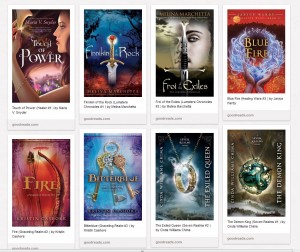
Originally published at Stacy Whitman's Grimoire. You can comment here or there.

By:
Stacy Whitman,
on 5/23/2012
Blog:
Stacy Whitman's Grimoire
(
Login to Add to MyJacketFlap)
JacketFlap tags:
mexico,
geekiness,
texas,
magical realism,
guadalupe garcia mccall,
tu,
summer of the mariposas,
isaac stewart,
young adult literature,
diversity,
fantasy,
Add a tag
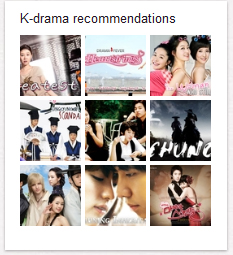 I’ve been meaning to post Korean TV (K-drama) recommendations for a while, but I haven’t quite gotten around to it. Recently, my new-ish Korean friends here in New York moved upstate and made some new friends who were looking for k-drama recommendations. My friends don’t watch much TV themselves, so I had the chance to finally make a list of some of my favorites, which of course makes a great seed for a blog post!
I’ve been meaning to post Korean TV (K-drama) recommendations for a while, but I haven’t quite gotten around to it. Recently, my new-ish Korean friends here in New York moved upstate and made some new friends who were looking for k-drama recommendations. My friends don’t watch much TV themselves, so I had the chance to finally make a list of some of my favorites, which of course makes a great seed for a blog post!
But I’m going to do something different. Instead of making yet another list with links, I’m going to make a Pinterest board, so I can keep adding to it when I find a new show to recommend. I’ve also started collecting some of my booklists tag into Pinterest lists, in case it’s easier for you to follow those there. Here’s my main Pinterest profile, and from there you can follow what interests you.
I watch K-dramas at both hulu.com and dramafever.com. I prefer to give you links to DramaFever, because it’s free there (some can only be seen on Hulu if you pay for Hulu Plus; I do because then I can watch them on my phone and Xbox). But Hulu is easier to pin—there is no easy image to grab on the show’s main page on DramaFever, for some reason. So, the dilemma is: pin DramaFever without an easy-t0-grab image, pin Hulu with the image but a link that not everyone can watch at, or both? I think both, for now.
The premium membership at DramaFever can be a good deal, by the way, because they are commercial-free—which Hulu isn’t, which makes no sense; if you’re paying for it, you ought to be able to watch commercial-free. Though DramaFever did just raise their rates, which means that it’s not quite such a good deal. (Last year it was only something like $49 a year, which breaks down to less than $5 per month. I think it doubled this year, but still, if you watch a lot of K-dramas, it’s worth it to be able to watch commercial free.)
At any rate, follow the links over on Pinterest for more K-dramas! And if Pinterest is not your thing, don’t worry–you don’t have to be a member to use the lists as a resource.

Originally published at Stacy Whitman's Grimoire. You can comment here or there.
More and more teens are getting e-readers in the last year or so. There was a big wave of e-reader purchases for them at Christmas and Hanukkah last year (see this article in the New York Times covering that trend—a NYT article that actually gets it right about children’s books!). E-books are growing, especially in e-books for teens, and with the iPad there’s even potential growth in e-books for younger readers with illustrations.
Teens, particularly, seem suited to e-readers and electronic devices that can carry an e-reading app. For parents who can afford it, e-readers might be the thing that gets that reluctant reader child to get interested in reading again.
Then there’s the flip side of the coin. My friend Sandra Tayler, the mother of four children, recently blogged about the reasons they still do paper books, including with their kids, two of whom are teenagers and two of whom are in middle school. She’s got some great points:
I can hand a child a $7 paper back and not have to police the treatment of the book. Books end up in bathrooms, spattered with snack food, left on floors, buried under piles of clothing, stepped on, shelved, stacked, and read. I could not do the same with a device costing over $100. I would have to keep track of it and spend time training my kids to treat it correctly.
I have four kids. I want them all to be reading, sometimes simultaneously. I don’t want to spend $400-$700 to get enough reading devices for everyone to read at the same time. Additionally we have a house policy that a child can have an electronic device when they care enough to buy it with their own money. This way they have an emotional stake in taking care of the device. If my kids save up $150, they’ll buy an iPod or a 3DS, not an e-reader. They regularly spend $3-$15 buying books for themselves.
One of the best ways to get kids to choose reading is to have books laying around where the covers can catch their interest. Many moments of boredom have resulted in hours of reading because book was laying nearby. This does not happen if all the books are neatly filed on my Kindle.
Physically taking my kids to the library addresses reading in a new way. The kids are able to speak with a librarian and really think about what they are looking for in a book. Then sometimes their favorite books are ones that happen to be shelved near the one that the librarian was showing them. Involving a librarian in the book selection process means a new perspective and opens up new possibilities for the kids.
Owning a physical book and shelving it with their possessions is one of the ways my kids begin to form their identity. Different kids will latch on to different books or series of books. Then they loan them to each other. There is power in being the one who loans or recommends a book. If all the books are organized in the same electronic library my kids will not feel the same sense of ownership.
My children spend a lot of time playing computer and video games. Sitting down with a paper book gives their brains a break from the flicker of screens. It encourages them to switch over into a relaxed way of thinking. I’ve had them read things on my Kindle or Howard’s iPad, they read for shorter lengths of time because the presence of the electronic device is a constant reminder that there are video games in the world and that those video games might be more fun than reading.
In the same post, Sandra talks about how sometimes reading on her e-reader makes her think of work, which I completely agree with. Reading a paper book, for me, is completely unlike work. I know this book is finished. On my Sony Reader—or now on my Nook or Kindle app on my phone—I can read finished books, but I find myself easily distracted because it fee
 Who’s going to New York Comic Con? We’re excited to be there for the first year, featuring Tu’s first three books! Make sure you stop by booth 2846 and say hi on your way to ogling slave Leias or taking pictures with Stormtrooper Elvis (or both). (Does Stormtrooper Elvis come to NYCC, or is he strictly a SDCC guy? I’m actually not sure.) I’ll be in the booth all day every day of the con, minus lunch breaks and some time to run around the show floor and attend a couple panels.
Who’s going to New York Comic Con? We’re excited to be there for the first year, featuring Tu’s first three books! Make sure you stop by booth 2846 and say hi on your way to ogling slave Leias or taking pictures with Stormtrooper Elvis (or both). (Does Stormtrooper Elvis come to NYCC, or is he strictly a SDCC guy? I’m actually not sure.) I’ll be in the booth all day every day of the con, minus lunch breaks and some time to run around the show floor and attend a couple panels.
In fact, you should know that Galaxy Games series author Greg Fishbone will be dropping in on Saturday from 2-3.
Also, Tu’s books will be discounted at our booth, so come by for a good deal, too!
Originally published at Stacy Whitman's Grimoire. Please leave any comments there.
My cousin is in town this weekend, and we have a tradition of walking around wherever we are with our fancy cameras and seeing who can get a great shot. Not so much a competition as just a way of sharing our interest in photography (me: semi-pro hobbyist who used to think about photography as a career, him: indie filmmaker and professional at the Armed Forces Network). Today, neither of us brought our good cameras, so we had to rely on our cell phone cameras (me: a Droid X which is EXTREMELY slow in reaction time, him: iPhone).
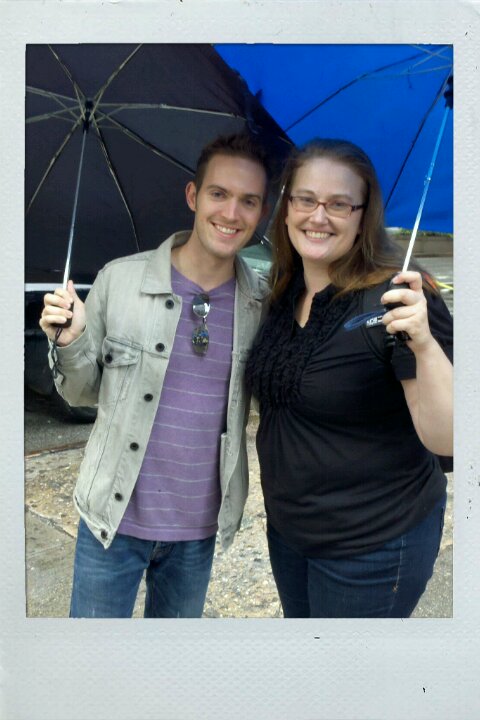
It just so happens that there was a parade and festival in Koreatown today. I found out because I saw a poster on the wall outside the restaurant on 32nd Street last night where I stopped for dinner on my way home from work.
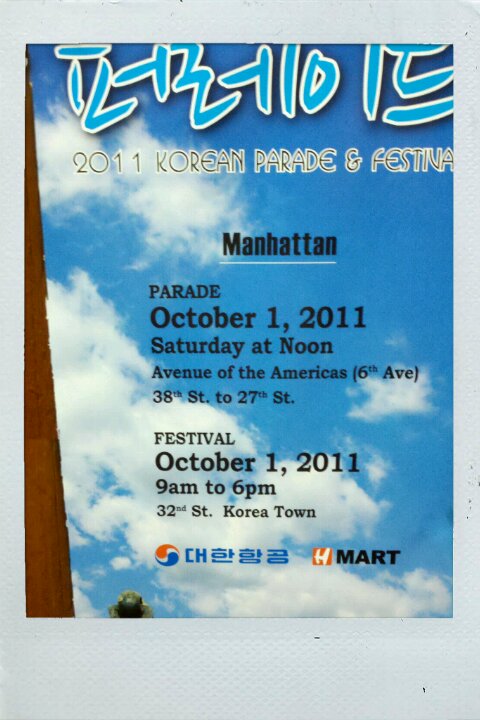
So we saw a bit of the parade—there were some really gorgeous hanboks


예뻐다!!
and other traditional clothing in several groups–
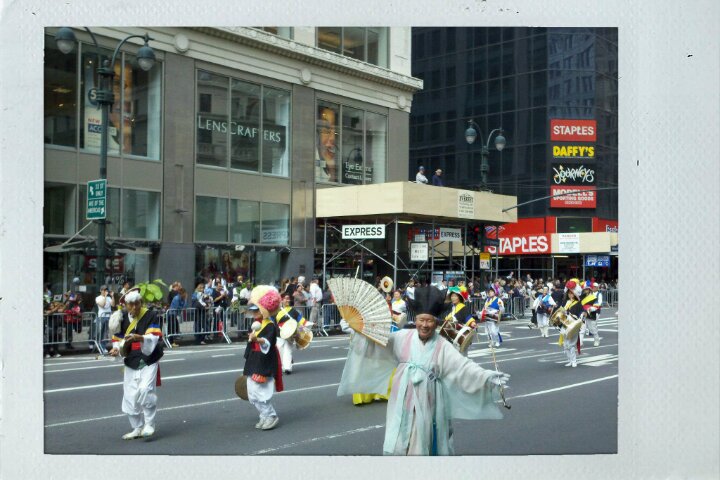

and then wandered down the street sampling ddukboki and kimbap and stuff like that. One of the drumming groups (below) was practicing for a performance on the stage. Not sure if they got the chance to perform—we left when it started to rain and when I came back to walk to the train on my way home, they were gone. The stage had a roof on it so hopefully they were able to perform. (Again, crappy cell phone pictures. I kind of like the blur, but I hated how I had no control over it.)




Below, here they’re making inj

By:
Stacy Whitman,
on 10/24/2011
Blog:
Stacy Whitman's Grimoire
(
Login to Add to MyJacketFlap)
JacketFlap tags:
publishing,
geekiness,
joseph bruchac,
ebooks,
tu books,
tu,
greg fishbone,
karen sandler,
tankborn,
wolf mark,
galaxy games,
Add a tag
For those of you who prefer your books in e-book form: we have some exciting news for Kindle people. Nook and iPad people, your day is coming soon in e-pub form. I’ll let you know as soon as I know!
Here are the Kindle versions!
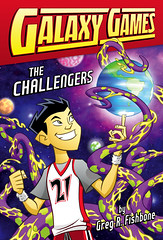

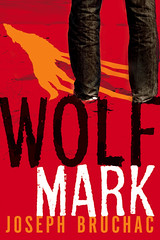
Read them right away! And then let me know what you think. 
Originally published at Stacy Whitman's Grimoire. Please leave any comments there.
Look what I just saw, right at eye level, at the Union Square B&N!
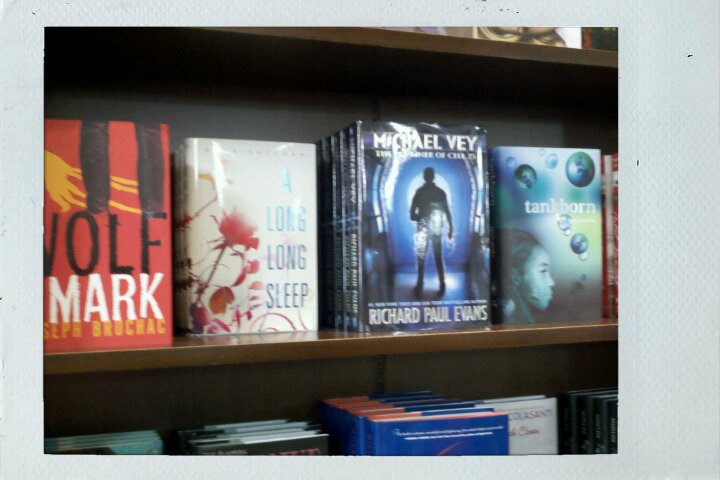
It’s a bit early still—these are September releases—but it still makes me giddy to see them!
Now it’s your turn! Go look for them! Go buy them! (And if your preferred bookseller doesn’t yet have them or Galaxy Games: The Challengers on sale yet, let them know you’re highly anticipating them and ask them to be sure to order them in.)
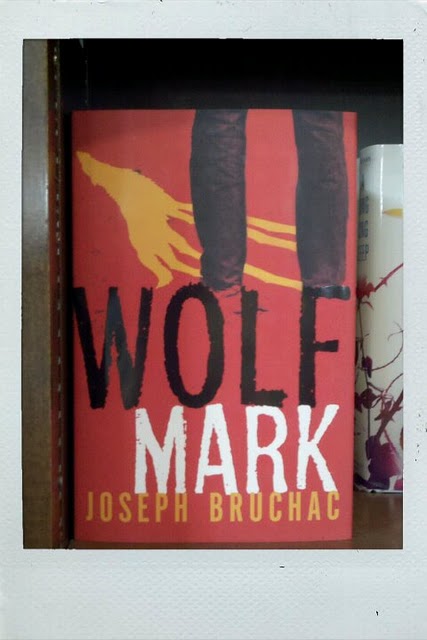
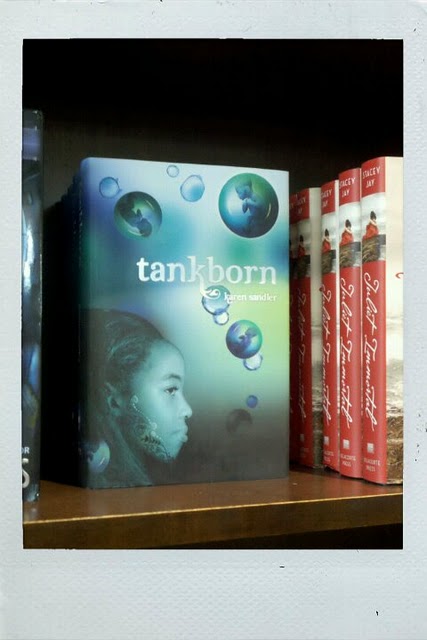
Originally published at Stacy Whitman's Grimoire. Please leave any comments there.
This is one of my favorite moments from the Korean TV show You’re Beautiful but I can’t find an mp3 of a finished version of the song. Funny enough, there’s lots of kpop on Itunes, just not this soundtrack from a movie about a kpop group. So I’m posting this here for my own reference, and consider yourself warned that this contains spoilers for the show if you wanted to watch it (it’s from the 14th episode of like 15 or 16).
Originally published at Stacy Whitman's Grimoire. You can comment here or there.
A friend was telling me how he misses sitting in a cushy college library, kicking vending machines. (I’m sure that’s exactly how he said it.) It reminded me of this. But I couldn’t just share it with one person. Once again (whether you want to be or not) you are the beneficiary of my current TV-watching obsession. (RSS and Facebook readers, you’re going to have to click through to the original post to see this).
Originally published at Stacy Whitman's Grimoire. You can comment here or there.
Just a few thoughts that combine from reading a couple recently published postapocalyptic trade books and some of the submissions I’ve been going through recently. This isn’t by any means a comprehensive list of things to think about—just a few things that struck me as a pattern in (some) recent reads (and something I notice when it’s done well).
I guess everything I want to say actually falls under the old (and very useful) “show, don’t tell.” And really, one doesn’t even have to apply to postapocalyptic writing, but it’s in a postapocalyptic book that I saw this problem, so here you go.

Courtesy Wikimedia Commons
- If you include newspaper clippings/stories as metatext to support the main narrative, make sure that it actually sounds like a news clipping. Use inverted pyramid structure, starting with the most important details and filling in backstory and history only once important details have been included.
One of my first publishing-related jobs in college was as a newspaper reporter, and the end of my stories—even my feature stories—often got chopped off for space. This is a particular form of writing that means your lede has to be an actual lede, not an introductory sentence, and you don’t include common-knowledge information (stuff all the characters would know because they live in that world) as an infodump in the second paragraph.
- Less is more in post-apocalyptic worldbuilding.
We usually don’t need to know every detail of the apocalypse in the first chapter, or even by the end of the book. In fact, it usually just slows down the reading and even occasionally turns off a reader to be reminded in every sentence just how bad the world is because of global warming’s effect a hundred years ago or because we ran out of fossil fuels or because a great plague hit the world three hundred years ago. These things are common knowledge to the characters—or perhaps they’re lost knowledge for the character, depending on how long ago the apocalypse happened and how much technology/media had broken down in the years since.
But generally letting the reader know exactly what happened within the first chapter or two turns into an infodump or an as-you-know-Bob. Actually, what you want to do is revealed in that last link—I didn’t know there was a name for it! Incluing, at least according to Wikipedia (which is of course so reliable, but let’s go with it for now unless someone knows of a more technical term), is what you really want to do:
- Reel out worldbuilding details little by little, cluing the reader in to worldbuilding details as they need the information (or slightly before, so as not to be jarring).
The best incluing example, the one I always go back to, is the first page or so of The Golden Compass, in which Lyra is talking to her daemon as they spy on a conversation in another room. We have no idea what a daemon is, even the basic concept of what one looks like, within the first page—that’s something Philip Pullman spools out to us little by little, creating a mystery, through small, specific details, that hooks us enough to make us want to know more.
The announcement came out in Publisher’s Marketplace today, so I can share it here, too!
Kimberly Pauley’s CAT GIRL’S DAY OFF, when a girl’s celebrity-addicted friends make her watch a viral Internet video, her secret “talent” to understand the language of cats catapults them into a celebrity kidnapping mystery with ties to Hollywood and Ferris Bueller’s Chicago, to Stacy Whitman at Tu Books, in a nice deal, for publication in Spring 2012, by Larry Kirshbaum at LJK Literary Management (World).
You might know Kim for her hilarious first novel SUCKS TO BE ME or her hilarious second novel STILL SUCKS TO BE ME. This one’s even funnier, and throws in a nice homage to Ferris Bueller’s Day Off, as well. We’re well into the revision process, and this one is slated come come out spring 2012. The listing doesn’t say here, but it’s a YA.
Go congratulate Kim, either at her blog or on Twitter.
Originally published at Stacy Whitman's Grimoire. You can comment here or there.
I’ll have some pictures from BEA, hopefully, if my phone hasn’t corrupted them all, but until I figure all that out, here’s a fun one for you. I’ve posted before about how I’m currently in a Korean drama phase. Here’s one that will have enough action/sword fights/political intrigue for any fan of epic fantasy (though this is realistic) and enough romance for those who like their epics with love triangles. Set in the Joseun period of Korea’s history. I hadn’t realized before seeing this that Korea had a history of slavery, so that adds an extra layer to all the other things I’m learning (of course, taking everything with a grain of salt, given that any historical fiction will take artistic leeway and not necessarily be a true reflection of what really happened in real life).
The fight scenes are particularly cool to watch—integrating this fast-beating metal sound that’s completely anachronistic, but doing it so much better than, say, A Knight’s Tale, which I know a lot of friends loved.
Don’t believe the Hulu description, though—it conflates the brother of the heroine and the former-army-general-turned-slave. Here’s the DramaWiki description, which is a lot more useful.
Chuno follows the story of Lee Dae Gil, a man of high birth whose family was ruined when Won Ki Yoon, a slave, burnt down his house and escaped with his sister, Un Nyun, who was in love with Dae Gil. Driven by his desire for revenge, he survived his harsh years on the street and made his name as a slave hunter, dedicated in his pursuit to find Un Nyun, his first and only love. Song Tae Ha is a General of the Army who became a slave after being falsely accused of a crime he did not commit, and finds himself on the run from Dae Gil’s relentless pursuit. Both men become entangled in a love triangle with Un Nyun, who is no longer a runaway slave, but Kim Hye Won, a nobleman’s daughter.
Wikipedia’s description is a lot more detailed, if you are a little lost at the beginning. At first it was hard to keep certain characters straight, because it is definitely EPIC—but I’d suggest referring to Wikipedia only if you don’t mind a few spoilers, because some of what’s revealed in the Wikipedia description is only revealed in episodes 5, 6, or 7.
So, if you need another TV show to watch (as if any of us do, I suppose), check this out.
This won’t work on LJ or FB, so if you’re reading it there, click to my main site to see the first episode embedded right here:
Originally published at Stacy Whitman's Grimoire. You can comment here or there.

By:
Stacy Whitman,
on 5/18/2011
Blog:
Stacy Whitman's Grimoire
(
Login to Add to MyJacketFlap)
JacketFlap tags:
tu,
science fiction,
community,
young adult literature,
diversity,
publishing,
writing,
fantasy,
cons,
geekiness,
children's literature,
Add a tag
Here you go! The first installment. Note that this was written to be spoken, so sometimes the diction might seem a little weird for a blog post. But I’m just going to leave it as-is, because you’ll get the idea.
Beyond Orcs and Elves: Diversity in Science Fiction and Fantasy for Young Readers
Ursula Le Guin, way back in 1975 said: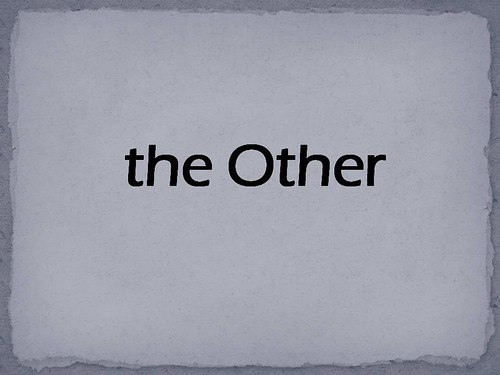
The women’s movement has made most of us conscious of the fact that SF [science fiction, but let’s include fantasy too] has either totally ignored women or presented them as squeaking dolls subject to instant rape by monsters—or old-maid scientists desexed by hypertrophy of the intellectual organs—or, at best, loyal little wives or mistresses of accomplished heroes. Male elitism has run rampant in SF. But is it only male elitism? Isn’t the “subjection of women” in SF merely a symptom of a whole which is authoritarian, power-worshiping, and intensely parochial?
The question involved here is the question of The Other—the being who is different from yourself. This being can be different from you in its sex; or in its annual income; or in its way of speaking and dressing and doing things; or in the color of its skin, or the number of its legs and heads.
 That was 35 years ago. (I know. I can’t believe it myself.) How are we doing today? I want to talk about the inclusion in speculative fiction for children and young adults of what 74% of the book-buying public might consider the Other in terms of mostly racial but also cultural differences. Perhaps this will help you in writing fantastic creatures or aliens, as well, this idea of writing the Other, but I want to focus on the human element today.
That was 35 years ago. (I know. I can’t believe it myself.) How are we doing today? I want to talk about the inclusion in speculative fiction for children and young adults of what 74% of the book-buying public might consider the Other in terms of mostly racial but also cultural differences. Perhaps this will help you in writing fantastic creatures or aliens, as well, this idea of writing the Other, but I want to focus on the human element today.
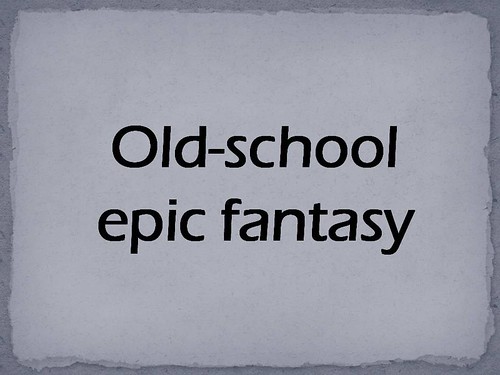
Old-school epic fantasy
- Campbellian monomyth (guys who start off their adventures in inns)
- ¨The British tradition”: Victorian fantasists to Tolkien & Lewis
- ¨My elves are better than yours”
- Dragonlance: The New Adventures
You may or may not know that fantasy as a genre started long before Tolkien was born. In fact, people have been telling fantasy stories for as long as there have been people. After all, the first fairy tales weren’t just what we now refer to as “myths,” creation stories and just-so stories. They were also fantastical tales told to pass the time or to warn children not to wander in the woods alone.
But let’s just start with the Victorian era, which had its own set of rules, morals and mores, body of literature, and cultural influences. We start with writers like George MacDonald, one of the primary influences on both Tolkien and Lewis, who wrote such tales as The Princess and the Goblin, The Light Princess, and The Princess and Curdie. His books drew upon fairy tales in their use of goblins, and they were fun, adventurous, and even allowed girls to have some adventure, whi
I see this so often—most recently earlier today: A “writer”* tells his or her friends, “I have this great idea for a novel! What do you think? If I wrote it, would you read it?”
There’s no way to answer this one honestly as a friend if you’re also an editor. Because my honest answer would be no way, thanks. Unless you were Brandon Sanderson or Dan Wells or another published friend who I’ve talked with about a few ideas in the past—published authors with a track record of turning ideas into readable prose. And even then, those ideas were often only half-formed in those conversations, ideas that grew into something so much more complex and interesting once the friend actually wrote his schizophrenia novel or his chalk-drawing novel or whatever. (I had nothing to do with the germination or the development of those ideas—I just happened to be in the room, physically or metaphorically, when a conversation about what they were working on next happened at some point.)
Why?
Ideas are a dime a dozen.
It’s not the concept that matters so much as the execution. Well, I take that back partly. Worldbuilding matters in fantasy and science fiction, that’s for sure. Obviously, or I wouldn’t be giving a whole 2-hour workshop on it this weekend, and we wouldn’t have endless fan conversations about what magic system is better or which would win in a fight, pirates or ninjas.
But even a story with something as awesome as pirates or ninjas needs good execution to make it worth reading (or watching—just look at Pirates of the Caribbean 3. Though that would be an awesome Rifftrax. But I digress). And interesting characters. And a plot that holds up under pressure.
Ideas don’t matter if you can’t write the book (period) and write it well (which will require revisions—too many novice writers think they’ll be the exception because they got away with writing term papers at 3 am on the day they were due and getting an A on the first draft; novels are not term papers). Worrying about whether readers would like the idea before actually writing the book is putting the cart before the horse. If you don’t write it, talking about the idea to all your friends/the internet/that editor you just met randomly on the train is just all talk and no action—especially when the idea usually involves vagaries like a generic romance and “the characters learn that love conquers all, and they learn that bigotry is wrong.” Or “and all the kids learn that friendship is better than bullying.” Or “and they learn that they really do need their mother after all.”
Even Max learned that home was the best place to be. But that’s not why most people have loved Where the Wild Things Are for almost five decades (yes, that’s right–it’s almost 50 years old). We love it because Max makes mischief, because he runs around the house in a wolf costume telling his mother, “I’ll eat you up!”, because he goes on this fantastic journey to the land of the Wild Things where they have a wild rumpus, and because when he comes back home his supper was still hot. It’s the details that make the story a classic—the way it’s written, and in this case, the way it’s illustrated. Sure, Max learns a lesson, if you want to call it that. But the idea isn’t as important as the execution when it comes to making the book linger in the minds of five decades of children and their parents.
If you’ve gotten an idea that grabs you and you think it would make a great book, then write it. And write some more. And joi
As I was walking through the muggy streets to work this morning, it was a little hard to breathe—it was threatening to rain but hadn’t quite gotten there yet. And that got me thinking about my asthma, and for some reason time travel along with it. Health/medical issues/immunity differences between time periods is a subject (are subjects?) that’s been talked about a lot in adult SF, but I haven’t really seen it addressed as much in science fiction for children and YA: Method of time travel aside, what would happen to someone who is extremely, say, allergic or asthmatic or something who had to travel in time? Sure, we generally want our heroes to be in good health so, y’know, they don’t die before the end of the book (and I’d truly worry that an asthmatic who doesn’t have access to modern medicine in the middle of a bad attack would end up dead or at least an invalid in most historic times—or would they? would certain cultures have treatments that would help?).
But could it be done? Could someone who had a condition that’s considered relatively minor and/or chronic today be the hero of a time-travel story? How would that be done in a way in which the condition presents challenges alongside the challenges of whatever the plot/mystery is—challenge them even to the point where there is a danger of dying, yet not actually die?
What say you, writers? Anyone ever do this story? Has anyone ever done it, that you can recall? I can’t think of any published time-travel books in which the main character has a medical condition that would present a danger in a historic time period. Can you?
Originally published at Stacy Whitman's Grimoire. You can comment here or there.
On the recommendation of a friend, I watched an episode of a Korean romantic comedy, The Woman Who Still Wants to Marry, describing it as "a Korean Sex and the City, but perhaps with less sex." You might have heard me gushing about it on Twitter. It was HILARIOUS, so I must share it with you, and now I'm on to discovering other K-dramas, as apparently they're called. There are a bunch of them on Hulu.
What's interesting is the next one I'm interested in checking out, Boys over Flowers, is based on a Japanese manga and anime series. Which of course makes the anthropological side of me wonder about the pop-culture bleed-over between Asian nations, and so forth.
Here's the first episode. Maybe you'll be as hooked as I am. You *have* to at least get as far as the asphalt incident.
Speaking of anthropological curiosity, I was especially interested in one particular thing I had never heard of from any of my Korean friends (including two Korean roommates)---it just never came up in conversation, I suppose: the Korean spa. There's a part of TWWSWtM in which one of Shin Young's suitors, Sang Woo, swears he's going to wait outside for her all night if she doesn't come downstairs. (They're very proper about guys never going in the girls' apartments, which is why later there's a sort of scandal when... But I won't spoil it! You have to see it!) But it's winter, and she tells him he'll freeze out there. So he says he'll wait all night at the spa by her house instead. And this spa! I've never heard of such a thing--there's this room in it where men & women are assigned gender-color-coordinated shorts/shirts that look kind of like mini-scrubs, and people just lie in the room and sleep. And there wasn't any context! This baffled me, and no one I asked could explain what kind of spa lets people sleep there all night.
But at last the mystery is solved. I went out for Korean barbecue with some friends the other night and the subject of this show came up, so of course I had to ask: had anyone heard of such a thing?  And they had! And of all things, there's one in Queens! Fascinating. I'll have to try it out at some point.
And they had! And of all things, there's one in Queens! Fascinating. I'll have to try it out at some point.
It was also hilarious to me as a 30-something professional woman. I sympathize with the three main characters greatly, especially as a fairly feminist member of a pretty conservative culture (Mormonism). Much like Shin Young, no matter how well I do in my career, for many people, the thing that defines me is that I'm an old maid. But if I end up being Miss Rumphius in my old age, how can that be a bad thing?
Originally published at Stacy Whitman's Grimoire. You can comment here or there.
I have finally set up my living room reasonably well, though I can’t figure out how to bring in a couch, and I seriously need more places for people to sit. (Just found some really great-looking folding chairs at Target that I’ll be ordering—folding chairs make great small-space seating options when you need more—but I still want a couch too, or at least a love seat.) I’m considering putting the bookshelves into the entryway, where the shoe rack and the bike currently are, and rearranging the room so that the TV is in front of the windows (really, really need to get curtains, too—Ikea is great for cheap cute curtains), the kitchen table which is currently by the windows goes over where the comfy chair is on the opposite wall, and the comfy chair goes next to the fridge or in the middle of the room (splitting the room in two for “living room” and “kitchen” spaces), leaving the long non-kitchen wall for a couch. But that leaves the bike in limbo. I have no idea where to put it. I think I need to figure out a ceiling-hook arrangement. Anyone familiar w/ that kind of thing?
Seems like the best use of a corner with a radiator, for example–hang a bike rack from the ceiling. Perhaps there’s something out there that I might even put on top of a radiator, rather than having to figure out how to get something to stay hooked in the ceiling? I’m never really good at even hanging plants from the ceiling, so I don’t trust my ability to hang bicycles.
Also things I need to figure out that I could use advice on: is there such a thing as a stand-alone cupboard organizer that would allow you to add another shelf? I don’t have enough cupboard space, but the top shelves of my cupboards are ridiculously tall and could stand being cut in half to allow another shelf, but there’s a gas meter in the middle of the cabinet, which doesn’t allow for a real shelf. I’m not really quite sure where to put all my spices yet.
Where do New Yorkers look for cheap, bed-bug-free, comfy furniture? Ikea’s cheapest couches aren’t the most comfortable. A friend pointed me to a custom furniture place in Indiana that will ship cheap furniture to you that has actual storage inside it, which sounds great, but it sounds like the couches are pretty over-firm, as well, and you have to assemble them yourself. I’d rather be able to sit on a couch to test it out (ask my Chicago roommates, Becky and Siobhan, what happened the last time we bought a cheap couch without testing it out first! No stuffing, no springs, just pleather over board, seriously). Ikea might be my best option for the price, but surely there are other options to explore, right?
This really is a cute apartment, once I can get everything working properly. Not very big, but almost big enough for all my stuff. And if I can go through all my books and maybe get rid of (gasp) a few of them, particularly the ARCs that I’ve been meaning to read but never actually gotten to, and books for church that are now available online, and other such things, I might be able to cut back on one bookshelf and that would save a bit of space!
At least, that’s my thinking. But have you ever tried to get rid of enough books to equal a six-foot-tall bookshelf? It’s agony!
And don’t even get me started on the right place to put a litter box in a NYC apartment. At least, this apartmen

By:
Stacy Whitman,
on 3/17/2011
Blog:
Stacy Whitman's Grimoire
(
Login to Add to MyJacketFlap)
JacketFlap tags:
science fiction,
young adult literature,
fantasy,
geekiness,
children's literature,
joseph bruchac,
genealogy,
tu,
greg fishbone,
fall 2011,
karen sandler,
Add a tag
We’ve got some exciting news over at the Lee & Low blog that you need to check out.
Also, for those who were interested in the African American genealogy conference, I promised I’d post my Top Ten Tips slides here and have gotten quite busy this week and haven’t gotten to it yet. I’ll post over the weekend. Thanks for your patience!
Originally published at Stacy Whitman's Grimoire. You can comment here or there.
A friend shared this article with me recently, delving into a decades-long experiment trying to recreate the domestication of pets in foxes—and succeeding, faster than they had anticipated. I found it fascinating, especially because I’d just recently seen something about the discovery of a burial site that dates back to before pets were domesticated, and foxes were buried with all the care that a family member might be along with their owners. It makes me wonder why they gave up on domesticating foxes if they are capable of being domesticated. The article I read posited that foxes could only be domesticated up to a point, which would have explained why people turned to wolves.
Now I can’t find the original article to link, though. But here’s a Time article that covers the same thing.
Originally published at Stacy Whitman's Grimoire. You can comment here or there.
Well, I don’t know what else to call it. I’m flying in a little early before LTUE in mid-Feb. to visit Rick Walton’s publishing class, and he tells me that editing students will be invited as well. So if you’re a BYU student in one of the writing or editing classes and want to get in on the Q&A session in Rick’s class on the 16th (I’ll be doing a short presentation, but mostly it’ll be Q&A), find out more through your department or contact Rick directly.
If you’re not a BYU student, no fear—just come to LTUE! It’s official that I’ll not only be participating in a number of panels but also giving my diversity in children’s fantasy presentation:
Beyond Orcs and Elves: Diversity in Fantasy and Science Fiction for Young Readers
Recent cover whitewashing controversies and the internet discussion tagged #RaceFail have brought to light how little diversity can be found in fantasy and science fiction for young readers. We’ll discuss the history of diversity in these books, including diversification through fantasy races that all share the same traits, and ways for authors to consider diversifying their own stories. We’ll also discuss writing cross-culturally, cultural awareness, issues of appropriation, and other things to consider as you write.
Sorry, I’m afraid I don’t have time to find hyperlinks at the moment, but google Life, the Universe & Everything (LTUE) to know more (or look at my last post for links).
Originally published at Stacy Whitman's Grimoire. You can comment here or there.
Between the holidays, a nasty bout of the flu, and being busy with preparing Fall books for design and getting next spring’s books well on their way, I haven’t had much time to even think about what I’d post here lately. If you’re interested in my flittering day-to-day thoughts, follow me on Twitter—it’s not much more there lately, but it’s more!
I pop in here today to let you know about Life, the Universe, & Everything 29: The Marion K. “Doc” Smith Symposium on Science Fiction and Fantasy. I’m sure you’ve heard me talk about it in previous years—it’s one of the best little cons I’ve ever been to. It’s a local convention run by BYU students and Utah Valley residents who are fantasy & SF buffs. In recent years, it’s always been free. This year, they decided to charge a nominal amount so that the budget woes they’ve had to deal with (the previous venue required them to offer it for free) will be solved. But $20 still isn’t that much for a 2 or 3-day convention, and if you’re a BYU student/staff/faculty, you still get in free.
What will you get for your $20? Pretty much the best that Utah has to offer in science fiction and fantasy—and that’s saying a lot. James Dashner, the author of The Maze Runner, will be the Guest of Honor. My friends, authors Brandon Sanderson and Dan Wells always go (though I don’t see Brandon on the schedule, so something may have come up for him), as well as webcomic artist Howard Tayler (the Writing Excuses trifecta). Tracy Hickman, Jessica Day George, Mette Ivie Harrison, Bree Despain, Janci Olds (who has a book forthcoming from Macmillan), Eric James Stone, Robert J. Defendi, Rebecca Shelley, John Brown, Larry Correia, Julie Wright, Robison Wells, Jake Black…
I know I missed somebody there. Oh—ME!
And it doesn’t matter if you’re an aspiring writer, a pro, or a fan—there’s something there for everyone.
Once my schedule is pinned down a little tighter, I’ll post it here. You’ve got a month to plan–if you’re in Utah (or want to take a trip there), plan for Feb. 17-19 at BYU. It’s no longer in the Wilkinson Center–it’s now hosted by Conferences and Workshops. Register here (or give them a call at the number on that page). That means better parking, even if there are fewer easy lunch options in the Conference Center on campus.
Hope to see you in Feb.!
Originally published at Stacy Whitman's Grimoire. You can comment here or there.
[My apologies if you've already seen this on my site. For some reason, the LJ importation device on my blog seems to have broken, which then breaks the Facebook automatic importation from Livejournal. I'm copying and pasting the last 5 entries that have been missed in the importation, as a temporary fix to figuring out the WordPress problem.]
I'm rewatching a comfort movie from my childhood again, a huge favorite: Willow. Warning: POSSIBLE SPOILERS. Sure, the movie's 22 years old, but I'm sure there are those who haven't seen it yet.
There's so much to love about this movie. So I thought I'd really count the ways, because I want to share, and enumerating them via Twitter just doesn't work as well as a bulleted list.
- Uses old fantasy tropes like farm-boy-goes-on-quest in new, interesting ways. This farm boy is not a hidden prince, but a father and husband who's well-established in his life, and knows where he comes from.
- Said father is a nurturing figure in the movie--he takes care of the baby competently the whole way through. Nice change from the big manly heroes who always save the day through brawn---though of course we get that in Madmartigan.
- "Ignore the bird. Follow the river!"
- The brownies are a great use of perspective, blue screen, and editing to make it seem like they're actually tiny people (well, for 1988 technology). And who can't love lines like "I stole da babyyyy!"
- Madmartigan. Everything about him. His mysterious past, his roguish nature. His complete inability to possess tact.
- "Temptiiiing... but, NO!"
- "Gentlemen? Meet Lug!"
- The diversity of characters in both the daichini (daikini?) and nelwyn people is refreshing in a genre that sometimes (not always, but too often) forgets that not all elves or dwarves are exactly the same.
- Drunk brownies falling in love with kitties
- Mouse hats
- Chase scenes galore! Including one that plays on the old cartoon trope of rolling down a snow-covered hill (after a great sled chase scene!) and turning into a giant snowball.
- The fact that until today when I looked it up on IMDB---i.e., for 22 years---I've thought that Madmartigan's name was Mad Martigan, because everyone thought he was mad.
- Blackroot. "Puts hair on your chest!"---just what a baby girl wants!
- Okay, so the final fight scene with the two-headed monster is a bit odd. But Fin Raizel definitely makes up for it!
- "Willll-loow! YOU IDIOT!"--Fin Raizel, as a goat
- Fin Raizel as a sugar glider, or just about any animal, for that matter
- A love potion gone wrong that helps a strong female character realize she's fighting for the wrong team
- Sorsha kicking Madmartigan in the face
- The sets! Oh, the beautiful sets!
- The costumes! Oh the beautiful costumes!
- Except: What is UP with General Kael's skull mask?
- "It went away? 'I dwell in darkness without you' and it went away??"
- I also just realized (how many times have I watched this movie? at least twice a year for many, many years) that the people at Tiras Lee were turned to stone or encased in crystal or something. It's so quick and not terribly clear---all these years I thought they were just stones Madmartigan was waving at.
- Madmartigan thinking he's so scary when everyone runs at Tiras Lee, when it's really a two-headed fire-breathing used-to-be-a-troll creature.
- Why does the music (final fight scene) keep make me expect Sloth the come swinging in on a rope, yelling, "HEY YOU GUUUYS!"?
- Oh yeah, this isn't the final fight scene. We still have to face off with Bavmorda.
- "You're not warriors! You're pigs! You're allll pigs!"
- Oh, I'm sure I'll remember more as the movie plays on.
What about yo






 Who’s going to
Who’s going to 


















